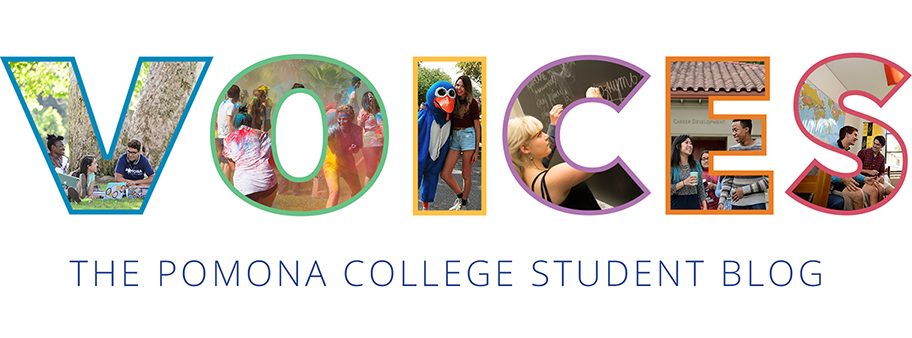Over my last few posts, a still-developing preoccupation of mine has, without my go-ahead, disclosed itself: how can one characterize and illustrate the statistically-anonymized Pomona student? Without tripping into generalities and abstractions, is it even possible to depict the real flesh, blood, and bones of a student body instead of mechanically regurgitating the brochure-fitted, stereotype-addled definitions of the student body? The answer is a resounding one. No, it is not possible. No, the people here are too distinct, too peculiar, too “all-over-the-place” – in regard to their geographical origins, academic interests, and temperaments alike – to describe without a bit of soppy over-embellishment and over-idealization. It is an easy, perhaps mindless task to publicize a U.S. News & World Report or Forbes ranking; it is an impossible one to succinctly portray the synaptic firings and on-the-way-to-class musings of a single person.
The benefit of a platform like this is that it provides a glimpse, a snapshot into the lives of various undergrads. It paints an incomplete picture, but, better than a blank canvas, it offers some color, some vitality to an otherwise lifeless and unadorned sketch. I admit, then, to the futility of my ongoing operation – before my attempts at characterization resume, before I aim once again at a clouded, distant target, this futility needed to be addressed. However, what my attempts may lack in comprehensiveness, they make up for with an integrity of purpose, what I might call, to extend the above metaphor, the steadiness of my aim. That is to say, they contain what I believe to be the starkly-present attributes – the flesh, blood, and bones, if you will – of the otherwise blurred Pomona “type.” Having spent three years and, now, a couple summers on campus, the task of unearthing some of these attributes is not so daunting. Please indulge me, though, and excuse the generalities. They come from the specificity of my own experience.
One such experience: July 1, the nation prepares to celebrate its independence and, surprisingly, the World Cup is on many Americans’ minds. Fútbol, for the first time, has inspired the sort of tongues-out, chest-beating, flag-waving fervor that regional football usually attracts. Bars are getting crowded at midday. Offices are astir with updates and score reports. Yet, on the way to my self-appointed summer office (the library), I noticed a group of teens gathered on Walker Beach. They were not gathering, as I had first suspected, to go watch the game; they were gathering to play the game. While countless others were glued to their television sets and laptop screens, these kids were enjoying some pick-up soccer and, judging from the levity of their play, they were not in the least bit concerned about missing the U.S. vs. Belgium telecast. For the moment, spectatorship – a role, these days, that is almost inseparable from the word “teenager” – had no appeal to them.
Moving from specificity to generality, then, I would like to suggest that this discomfort with spectatorship is endemic to the ever-elusive Pomona “type.” While, admittedly, there was probably a hefty majority of the student population collectively hmph-ing at the United States’ defeat, there is something about sitting down, and remaining seated, that is uniquely unsettling to us. We can’t do it. Watching makes us want to play; reading makes us want to write; observing makes us want to experiment. A seat in the audience signifies, for us, complacency and ennui. This is not to say that we are averse to the spectator’s chair. No, we understand that watching precedes performance and that emulation precedes innovation. We cannot deny, though, that such a chair seems ill-fitting to us – it urges us, constantly, to stand up. This sensation – this unsettledness – is manifest to me now and, if my bow is as steady as I claim it to be, it also pricks my peers whenever they sit down.
